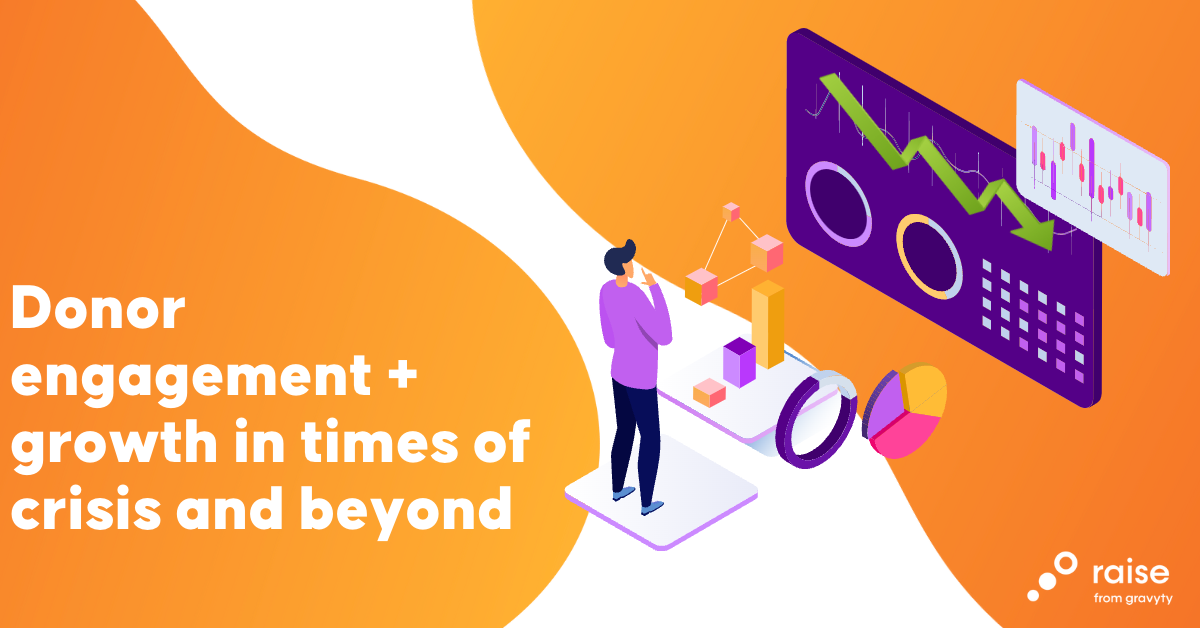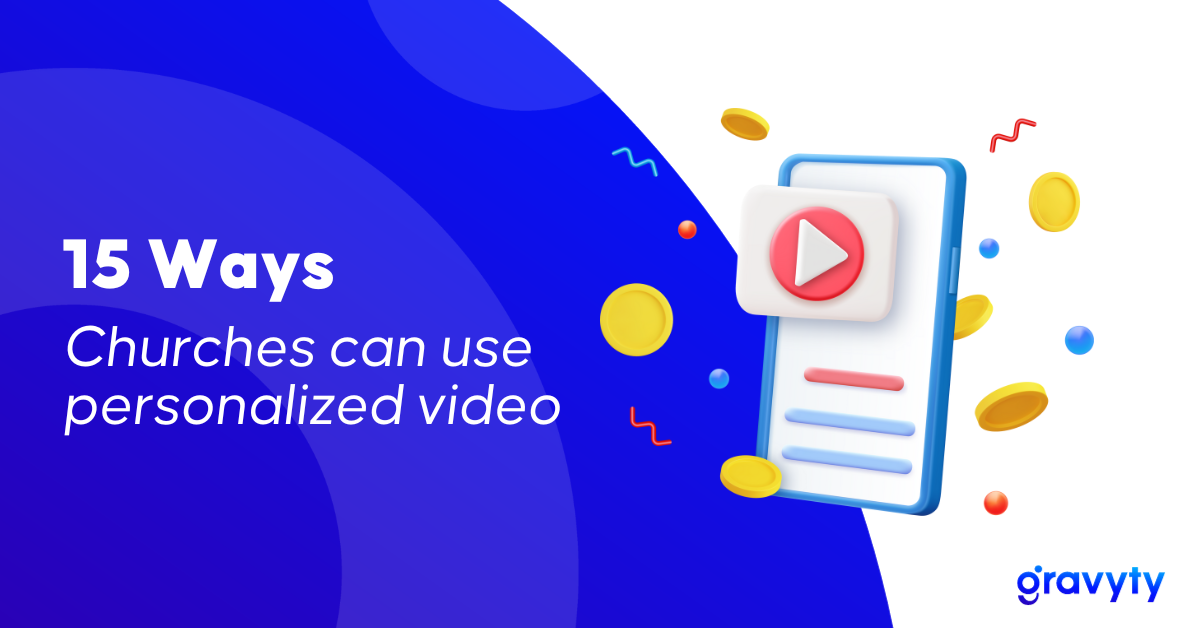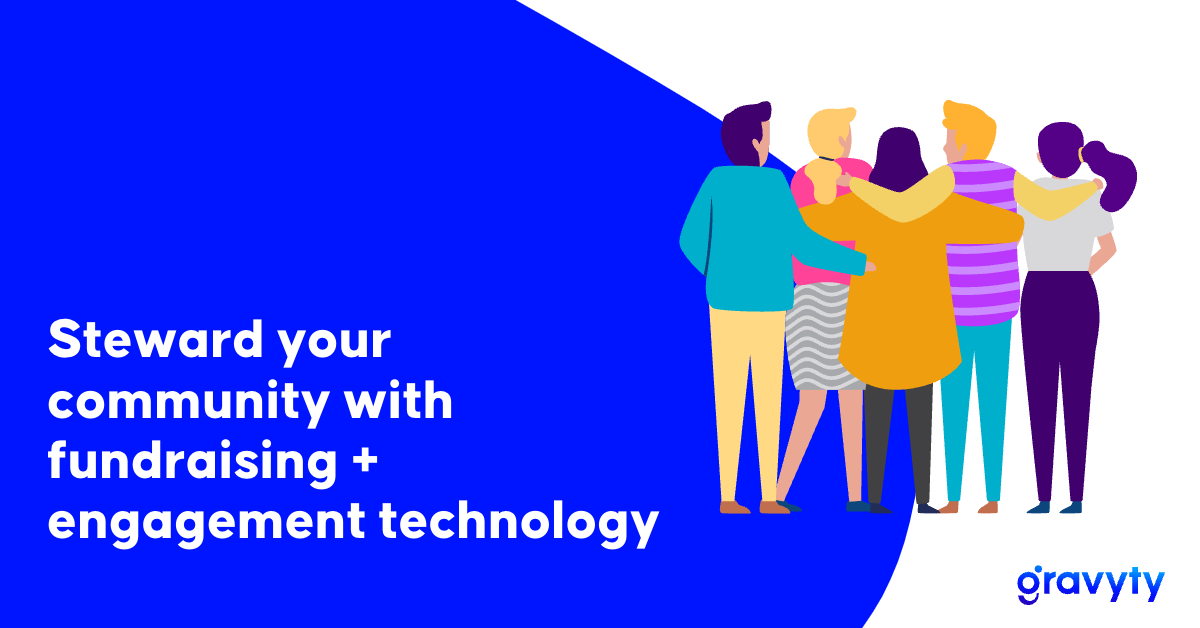How to build relationships with donors: The importance of employment information

Learning how to build relationships with donors is the key to retaining life-long support for a nonprofit or educational institution. As a result, it’s paramount to sustain the organization’s mission and impact. And the information you have about your donors can go a long way toward establishing and strengthening these bonds.
One resource that schools and charitable causes can tap into to make a huge difference is their supporters’ employment data.
In this article, we’ll explore how employment data can be a game-changer in donor development. Plus, we’ll delve into strategies for leveraging this data to create lifelong relationships. This will include:
- The power of employment data in workplace giving + corporate partnerships
- Best practices for gathering and utilizing employment data
- How employment data produces lifelong donors
Understanding the value of employment data in creating lifelong donors can unlock new avenues for engagement and stewardship overall. By harnessing the power of this information, fundraisers can forge deeper connections, personalize outreach and cultivate lifelong relationships with key supporters.
Let’s dive in to learn how to build relationships with donors!
How to build relationships with donors—a few different approaches
The power of employment data in workplace giving + corporate partnerships
Corporate philanthropy can go a long way for nonprofits, educational institutions, and other fundraising organizations. But did you know that having access to your donors’ employment data can substantially impact your team’s chances of benefitting from these opportunities?
We’ll cover the value of employment data in both workplace giving and broader corporate partnerships and how they can help build relationships with donors.
Workplace giving
As a key form of corporate philanthropy that places employees at the heart of a giving program, workplace (or employee) giving can go a long way. It’s generally the most accessible type of philanthropy to organizations of all shapes and sizes—with individual team members being the key to involvement. Thus, understanding where your donors work has a direct bearing on your organization’s ability to uncover opportunities.
While not an exhaustive list by any means, here are a few of the most common examples of workplace giving programs to keep an eye out for:
- Matching gifts — Matching gifts are a type of workplace giving program where employers match their employees’ donations to eligible nonprofit organizations. When an employee makes a donation, the company will contribute an equal (or sometimes larger!) amount, effectively doubling the impact of the original gift.
- Volunteer grants — Also known as “Dollars for Doers” programs, volunteer grants motivate corporate employees to volunteer their time with eligible organizations by providing a financial incentive. In doing so, the company they work for agrees to provide corresponding monetary grants to the organizations its employees support.
- Fundraising matches — Fundraising matches support employees’ fundraising efforts on behalf of a specific cause or charitable institution. Employees can participate in peer-to-peer events, such as charity runs or walk-a-thons, and their employer pledges to match the total funds raised—thus amplifying the collective fundraising impact.
- Charitable giving stipends — Charitable giving stipends are usually set dollar amounts gifted by a company to its employees. The purpose is for the employee to then donate the funds to a nonprofit organization or educational institution of their choice.
- Corporate volunteerism — Corporate volunteerism programs encourage employees to actively engage in community service and volunteering. Companies may provide paid time off (above and beyond typical PTO) or organize staff-wide volunteer opportunities to support local organizations or other social projects.
However, critical roadblocks occur when the majority of individuals that qualify for corporate initiatives like these remain unaware of the opportunity provided by their employers. If a donor doesn’t understand that their donation to their alma mater can be matched by their company to multiply its impact, they won’t know to take the steps necessary to complete their request.
When the fundraising organization has a supporter’s employment information on file, however, it can take a proactive approach to uncover available programs and inform qualifying donors accordingly.
Corporate partnerships
Knowing where your donors work can have a significant impact on your broader corporate partnerships strategy, too. After all, this information can help shape your approach to corporate philanthropy fundraising (albeit in a less direct way than with workplace giving).
This includes opportunities for programs like…
- Major grants
- In-kind donations
- Pro bono services
- Cause marketing
- Event sponsorships
- And more!
Companies typically aim to facilitate relationships with organizations that share similar values. Communicating the overlap between your institution’s donors and the company’s employees can be an excellent way to get your foot in the door for these conversations!
Your matching gift tool can help guide corporate partnership opportunities, as well. For example, Double the Donation’s 360MatchPro suggests numerous ways to enhance corporate partnerships using the employment information collected and stored within the platform. And it does so by providing a “Top Companies” tool that compiles a list of the companies most searched in an organization’s database widget. This offers valuable insights into the most popular employers within your network, which can be an excellent place to begin your corporate partnership outreach.
Not to mention, your donors can be some of your greatest advocates regarding corporate philanthropy and encouraging their employers to participate. If you have a major donor that works for a company you’re interested in partnering with, you can reach out to the individual to request a warm introduction to the leadership or corporate giving manager at the business.
And in your corporate outreach, you can even highlight the research indicating that companies benefit greatly from supporting the charitable causes their employees care about!
How to gather and utilize employment data to build relationships with donors
Equipping your institution’s fundraising team with the right information about your donors is crucial for optimizing giving strategies. Yet in order to empower this group to do so, you’ll need to establish a plan to effectively gather, maintain, and leverage your supporters’ employment data accordingly.
We recommend implementing the following tried-and-true practices that are proven to show significant results.
1. Enlist multiple methods for collecting donor employment information.
In order to utilize donor employment information to grow relationships with lifelong supporters, you’ll first need to collect the data. The more methods you use, the more likely you are to obtain the details you need!
We recommend using a combination of the following screening methods:
- Online donation forms — Incorporate an optional form field to collect the information or embed an employer search tool (such as Double the Donation’s) directly into the page to request employment data within the giving process itself. Donors already provide personal information, and many will be more than happy to share their employing company’s name as well.
- Email domain screening — If a donor gives to your organization online using the email address johndoe@homedepot.com, it’s very likely that the individual works for the Home Depot. Make a note of this information in their donor record for future reference!
- Post-donation follow-ups — Many donors retain high levels of engagement with your institution soon after completing their donations. In the hours following a gift, reach out to request their employment information via email follow-up if they had not previously completed the field on the giving form.
- Employer appends — To help fill in missing information after utilizing the above methods, consider outsourcing to a third-party appends service. You’ll provide the information you do have on a donor, and they’ll scan comprehensive data sets to identify the company the person works for.
All in all, collecting detailed and accurate donor information can help identify match-eligible donations, inform future fundraising strategies, build out well-rounded images of your supporters, and more.
Fun fact: research from Double the Donation reports that employing more than one approach to identifying match-eligible donors results in 77% more match-eligible gifts being identified.
2. Utilize employment information to tailor post-donation outreach.
Once you’ve collected employment information, it’s a good idea to use this data to guide and elevate your engagement strategy—specifically with matching gifts.
Some donors will choose to complete their submissions immediately following the conclusion of the donation process. Others, however, you’ll need to re-engage with afterward, which is why matching gift follow-ups can play a significant role. And when you have donor employment data on record, you can customize your communications to include company-specific eligibility criteria, program submission forms, and more.
After all, even if a donor is aware of their employer’s matching gift program, they need to access the company’s program guidelines to determine whether a specific gift qualifies to be matched.. These guidelines typically include:
- Minimum and maximum match amounts
- Qualifying types of employee donors
- Qualifying types of nonprofit recipients
- Matching gift request deadlines
- Matching gift ratios
- Links to online submission forms
The simpler you make it for your donors to complete the entirety of the process to request their matching gifts, the more likely your organization is to benefit from their participation. Since the criteria and steps for involvement can vary so greatly from one company to another, understanding where your supporters work becomes essential for teams looking to streamline and optimize the experience.
3. Integrate workplace giving software with your fundraising tools.
Collecting employment data to inform your fundraising efforts doesn’t have to be complicated. This is especially true when your institution has access to the right software. One of the easiest ways to get started is with matching gift (or workplace giving) technology—specifically when donation-matching tools integrate directly into your existing fundraising platform.
Luckily, that’s the case with Advance from Gravyty and Double the Donation!
By working with innovative solutions like these, you can get up and running, maximizing the benefits of your employment data as quickly and effectively as possible. The partnership empowers organizations to automatically uncover workplace giving opportunities through donor data, trigger personalized outreach that drives further engagement, and store the information for future data-driven partnership strategies.
From there, you can sit back and watch lifelong donor relationships develop as more revenue flows into your institution through automation.
How employment data can help build life-long relationships with donors
The more you know about your supporters, the better you can communicate with them, tailoring your engagement strategies and fostering in-depth relationships that go beyond the surface level.
Employment information, in particular, is a valuable asset that empowers organizations to establish lifelong donors who continue to support the organization’s mission and impact through individual and corporate giving opportunities in the long term.
Here’s how employment data plays a role.
Attracting and nurturing supporter relationships over time
According to the aforementioned Double the Donation research, mentioning matching gifts in a fundraising appeal produces a 71% increase in response rate and a 51% increase in average donation amount. And leveraging employment information in your outreach can allow for even more effective communications that drive donors, new and existing alike, to support your organization.
Thus, the knowledge allows organizations to prioritize relationship-building efforts and develop targeted cultivation and stewardship strategies. This includes young donors, who may be more likely to work for companies with corporate giving programs in the first place! Then, by nurturing these relationships over time, you can produce sustained support and increased loyalty.
How to enhance the donor experience and build relationships with donors
Leveraging employment data also allows organizations to customize and enhance the donor experience by tailoring communications based on donors’ personal and professional information. This increasingly personalized approach fosters a deeper connection and appreciation, improving the overall donor experience and is how top organizations build relationships with donors.
For example, rather than saying, “Your donation may be eligible for a match,” you can say, “Your recent donation of $100 qualifies for a matching gift from the Home Depot!” The latter shows greater attention to detail and demonstrates that the message was one developed personally for the recipient.
Not to mention, knowing where your donors work can also empower your team to send industry-specific information, invitations to relevant networking events that might be of interest, targeted fundraising campaigns, and more.
Providing valuable insights for prospect research
Finally, employment data can also help organizations estimate a donor or prospect’s wealth level (and, subsequently, their capacity to give), indicate connections to influential networks, and more.
These insights aid in informing prospect research and uncovering individuals who may have the ability and affinity to support their cause. And once your fundraising team decides to solicit a gift, provided wealth markers can also assist in crafting the perfect donation ask!
All in all, an optimally effective fundraising strategy typically involves an established base of long-term supporters. Once you’ve attracted an individual to your cause and built a strengthened relationship with that person, they’ll be more likely to continue giving to support your mission.
Employment data is continuing to emerge as a powerful tool to significantly enhance donor engagement and keep supporters involved year after year and beyond. By leveraging this information, fundraising organizations can tailor their outreach, recognize, promote, and acknowledge workplace giving potential, and foster meaningful connections.
Looking to learn more? Get in touch.



